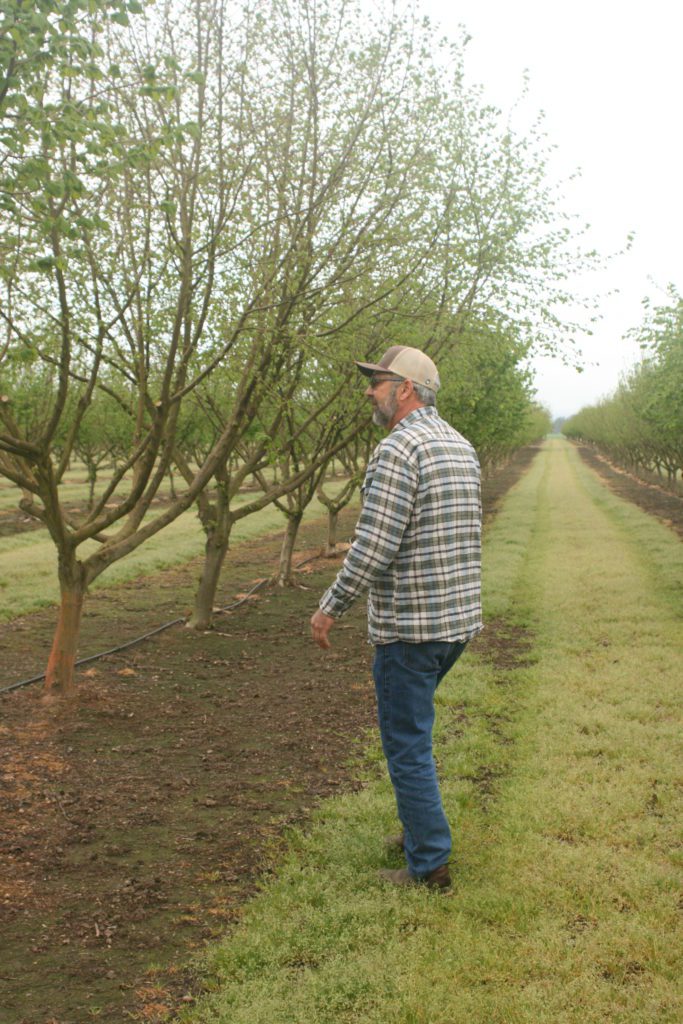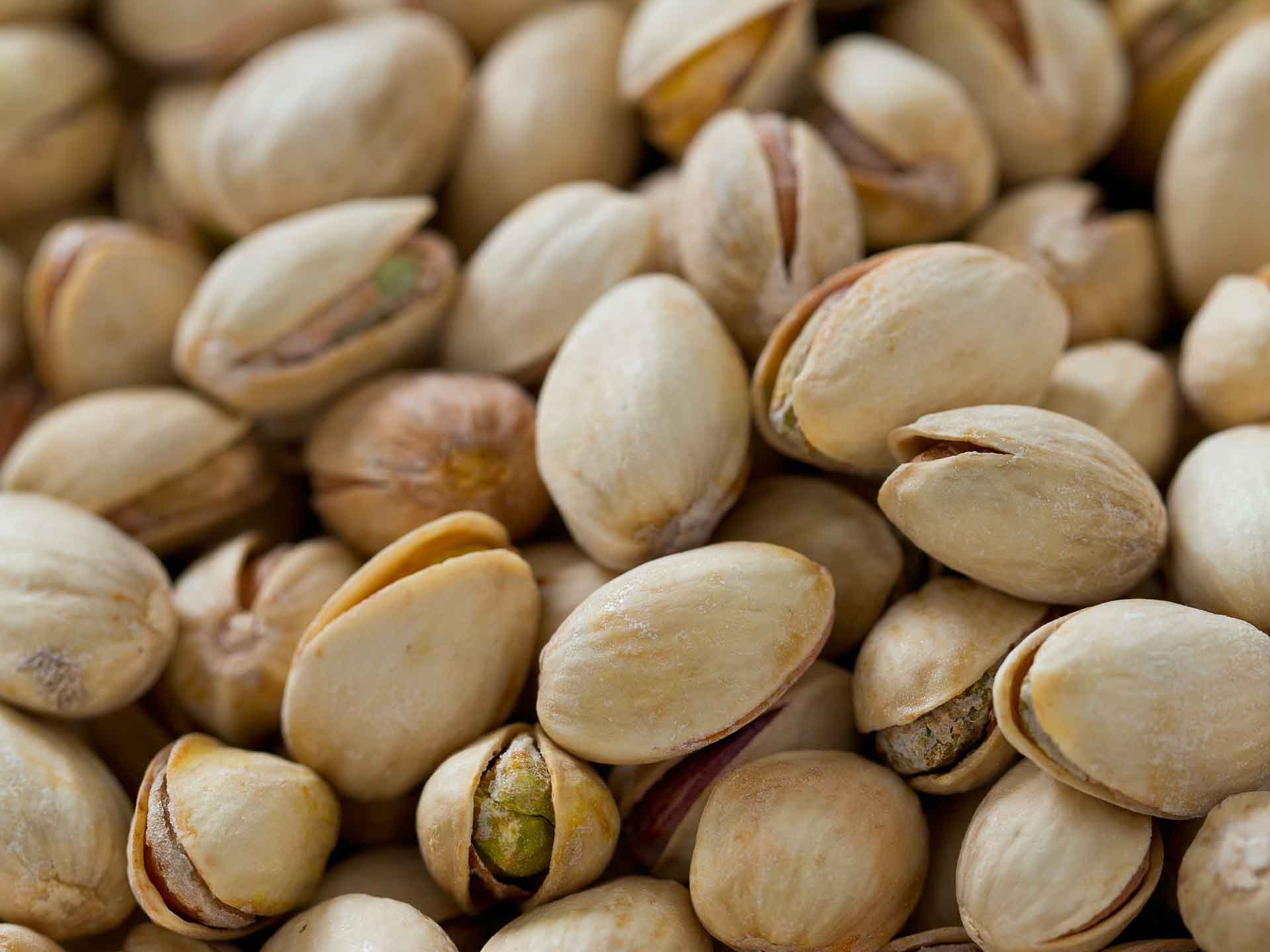A hazelnut tree cannot self-pollinate. It needs a pollinizer in order to set nuts. After you’ve decided on your main variety of production hazelnut, it’s time to choose your pollinizers. Since not all hazelnut varieties cross pollinate, compatibility is essential. Things to consider when choosing pollinizers are the timing of pollen release, and the compatibility between varieties.
Timing: If you’ve chosen a late-blooming variety as your production trees, such as Jefferson, you’ll want to plant late-season pollinizers. If you’ve chosen an early-blooming variety, such as Yamhill, it goes without saying that you’ll need to plant early-season pollinizers.
“Every year the pollen timing and flower development moves around,” said Jeff Newton, farm manager at Christensen Farms in McMinnville, Oregon. But if the flowers are later to emerge one year, due to weather conditions, then the pollen of compatible varieties will also be later that year, too, so it works out.
Variety Compatibility: This is where alleles come into play. Alleles are two or more genes – usually through mutation – that control the same characteristics. They are found at the same spot on a chromosome and are responsible for hereditary variation. In hazelnuts the pollen alleles must be different than the alleles in the flowers, or pollination won’t happen. The female flowers each contain two alleles. The male pollen contains either one or both of the same alleles as the flowers. This is why hazelnut trees cannot self-pollinate.
Fertilization
Hazelnut fertilization is a unique and complicated process. Hazelnut flowers form about a year before the nuts are ready to harvest. While most plants are fertilized within a few days of pollination, hazelnuts aren’t fertilized until 3-5 months after pollination! Hazelnuts are wind pollinated, like grasses, not by bees or other insects the way most other types of flowers are.
Female flowers begin to form in early summer. They become visible in late fall to early winter. Male catkins begin forming in late spring, appear in early summer, but don’t mature until winter. Peak pollination occurs in the dead of winter. Pollination timing largely depends on weather conditions.
The female part of the plant is a bright-red, plume-like tuft, which peeks from the bud scales. Lower inside the bud scales are 4-16 more separate flowers. There are several pairs of long styles with stigmas attached to receive the pollen. Each has a tiny base of tissue, which is the ovary and will later form the nut shell. Inside the ovary are two eggs.
The male part of a hazelnut plant is called the catkin, which drape in clusters. The anther is the portion of the stamen that bears the pollen. Pollen bears the sperm. Several days after pollination, the pollen tube grows to the base of the female style. The tip of the pollen tube closes, and the entire organ goes into a sort of suspended animation.
Over the course of a four-month period, the ovary slowly grows. In mid-to-late spring the growth process speeds up, with the majority of nut growth happening in the final 5-6 weeks before harvest.
Varieties
Jefferson is a later-producing tree, with later pollen needs. Currently, Jefferson only has three pollinizers: Theta, Eta and Felix. Felix is the earliest to drop pollen, followed by mid-season Eta and then later-season Theta. All three pollinizers have different allele numbers. And all three have different allele numbers than Jefferson.
When Jeff Newton planted his first field of Jefferson, he interplanted Theta, Eta and Gamma as pollinizers. “Gamma was too early,” Newton said. After discovering this fact two or three years in, he ripped out the Gammas and replaced them with Felix.
Yamhill is an early bloomer and producer. Birkemeier Farms and Nursery in Canby, Oregon suggests York, Wepster and Polly O as pollinizers. The nursery also lists Gamma, Jefferson and Felix as compatible Yamhill pollinizers.
Every pollen tree should aim for a different time of pollen release, Newton said. Planting three to four different varieties of pollinators is a good way to cover your bets as far as early, mid-season and late pollination. Pollen must be available to cover the flowering season. Hazelnut flowering is generally shorter in duration than its pollen season.
Viability
Pollen viability is also a factor. Some types of trees produce pollen that is only viable for a couple of days. If the weather isn’t ideal during those two days of production, “You’ve lost that pollen,” Newton said. That’s why planting more than one pollinizer is highly suggested. “Pollen needs to be dry to fly and wet to survive,” Jeff said. Showery weather is the ideal condition during pollination season, that way the pollen can dry in between showers and drop, and then the dampness from the next shower keeps it alive and viable.
Rebecca McCluskey, and others at Oregon State University, continually do research on hazelnut pollination, including checking for pollen viability in various varieties – both numbered and named.

Planting and Spacing
OSU has a chart for spacing, which is measured by distance from the pollinizers to the main varieties. There are plans for more studies to check if the chart needs updating. Birkemeier Farms and Nursery has several useful pollinizer charts on their website, including charts for spacing and density, compatibility, and bloom and pollen timing.
There are several different layouts, as far as planting pollinizers. “Everyone has their own preferred pattern,” Jeff said. He likes to plant a pollinizer every sixth tree in every second row, and then stagger. So when he’s done, he’s got a neat diamond pattern of pollinizers in each field. Among other crops, Christensen Farms grows 3,000 acres of hazelnuts.
Pollen travels roughly 80-100 feet, but if you planted a pollinizer in every row every 80-100 feet, it would really cut into space for your main producers. If you plant pollinizers farther apart than that, if one doesn’t work, you might be too far apart, Jeff said. To keep it simple, he said, he plants four varieties of pollinizers in each field (for Jefferson, he plants three). He plants one variety of pollinizer in one row, a second variety in the second row, a third variety in the third row and a fourth in the fourth row, staggering and continuing the pattern throughout the field.
Pruning
Jeff prunes pollinizers in pretty much the same way as he prunes production trees. (Although sometimes production trees are pollinizers, too. More on that in a minute). Tall is good, as far as pollinizers go, Jeff explains, since pollen floats downhill.
To keep track of his pollinizers, Jeff paints the trunks of his trees. He has reds, greens, blues, oranges, purples and pinks. “I’ve run out of colors,” he says with a laugh, “Depending on which field you’re in, yellow might have a different meaning.”
Jeff keeps a detailed computer chart for each field. He’ll print it out for the employees when they’re going out to replace dead trees, for instance. Some growers use GPS system to log their field layouts.
Getting back to production trees that are also pollinizers, Yamhill works on a McDonald and McDonald works on a Wepster. More growers are doing mixed plantings of those varieties these days. In a field of McDonalds and Wepsters, Jeff alternated a McDonald, and then a Wepster in each row. “I’ve got four pollens on each tree,” he said. The nuts are medium size and similar, and harvest time is roughly the same, so they can be sold in bulk together.
If you have more questions about which pollinizers work with which varieties, and how best to plant them, Jeff suggests asking a reputable nurseryman for guidance and advice.












